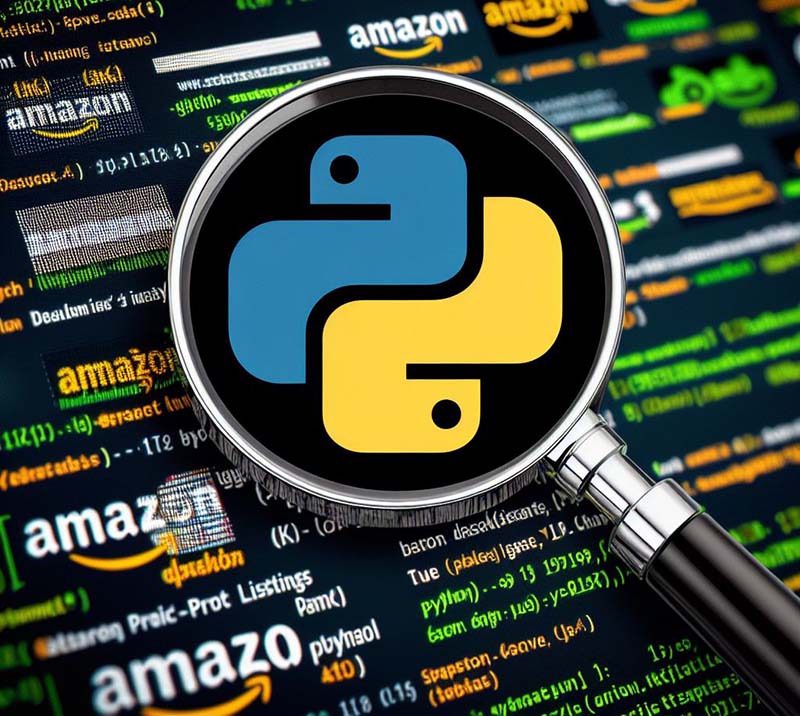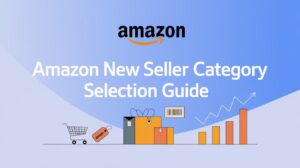What is Pangolin Scrape API, and What are its Advantages?
If you’re looking to fetch product information, prices, reviews, and ratings from large e-commerce sites like Amazon, you may face various challenges. Amazon employs intricate anti-scraping mechanisms, restricting request frequencies, blocking IP addresses, and even demanding captcha solving or login credentials. All these hurdles increase the cost and time of your data extraction, reducing efficiency and quality.
So, is there a method to effortlessly retrieve the data you need from Amazon? Yes, indeed—enter Pangolin Scrape API. Pangolin Scrape API is a cloud-based data scraping service designed to help you swiftly, easily, and stably fetch any data from Amazon. Simply provide a URL, and Pangolin Scrape API returns a JSON-formatted response containing all the data you desire. No need to worry about anti-scraping, IP proxies, captchas, or logins—Pangolin Scrape API handles these details automatically, allowing you to focus on data analysis and application.
Advantages of Pangolin Scrape API:
Ease of Use: No intricate spider coding required. Just use Python’s requests library to send an HTTP request and get the data you want. Pangolin Scrape API offers comprehensive documentation and examples for a quick start.
Efficiency: Pangolin Scrape API utilizes a distributed architecture, capable of handling multiple requests concurrently, ensuring high concurrency and low latency. Choose from different plans based on your monthly data needs, ranging from a free basic version to a professional version capable of fetching up to a million data points.
Stability: Pangolin Scrape API boasts robust anti-scraping capabilities, automatically switching IP proxies, simulating browser behavior, and overcoming captchas and login hurdles. This guarantees data integrity and accuracy. With a 99.9% availability rate, it promptly updates and adapts to changes in Amazon’s site structure, ensuring you don’t miss any data.
Flexibility: Pangolin Scrape API supports data retrieval from Amazon’s different countries, regions, languages, currencies, categories, and subcategories. Tailor your requests based on your target market, language preferences, and business needs.
How to Use Pangolin Scrape API for Amazon Data Scraping:
To use Pangolin Scrape API, first, register an account and obtain an API key. Follow the instructions on the official Pangolin Scrape API website for registration and key acquisition. Once you have the API key, you can start sending requests using the following Python code:
import requests
url = "https://api.pangolinscrape.com/v1/amazon"
params = {
"api_key": "your_api_key",
"url": "https://www.amazon.com/s?k=iphone",
"country": "US",
"language": "en",
"currency": "USD",
"category": "Electronics",
"sub_category": "Cell Phones & Accessories",
"attributes": ["title", "price", "rating", "reviews"],
"page": 1
}
response = requests.get(url, params=params)
data = response.json()
Pangolin Scrape API Response Format:
{
"status": "success",
"message": "OK",
"data": [
{
"title": "Apple iPhone 12 Pro Max, 128GB, Pacific Blue - Fully Unlocked (Renewed)",
"price": "$1,049.99",
"rating": 4.5,
"reviews": 1,021
},
{
"title": "Apple iPhone 11 Pro, 64GB, Midnight Green - Fully Unlocked (Renewed)",
"price": "$599.99",
"rating": 4.4,
"reviews": 3,894
},
{
"title": "Apple iPhone XR, 64GB, Black - Fully Unlocked (Renewed)",
"price": "$339.00",
"rating": 4.5,
"reviews": 25,564
}
]
}
You can see that Pangolin Scrape API returns a JSON-formatted response containing all the data you need. Use Python’s json library to parse and handle this data or leverage other libraries like Pandas for data analysis and visualization.
Data Analysis:
Data analysis involves using suitable methods and tools to analyze collected data, extract valuable information, and draw effective conclusions. During the data analysis planning phase, data analysts should choose appropriate analysis methods for the content they want to analyze.
Data analysis methods can be classified into several categories based on data types and purposes:
- Descriptive Analysis: Summarizes and describes basic characteristics of data, such as averages, standard deviations, frequencies, percentages, etc. It helps understand data distribution and trends but doesn’t explain causes and effects.
- Exploratory Analysis: Explores and discovers patterns and trends in data, such as correlations, clusters, outliers, etc. It helps identify hidden connections and potential issues but doesn’t verify causal relationships.
- Inferential Analysis: Makes inferences and predictions about population characteristics and variations based on sample data. It includes hypothesis testing, confidence intervals, regression analysis, etc. Inferential analysis validates causal relationships and predicts future data but requires specific assumptions and statistical requirements.
- Evaluation Analysis: Evaluates and optimizes data based on certain criteria and goals, such as performance evaluation, cost-benefit analysis, optimization algorithms, etc. It helps assess data quality and improvement directions but requires clear evaluation criteria and optimization goals.
Data analysis tools can also be classified based on data formats and scales:
- Spreadsheets: Common tools for data processing and analysis, allowing input, editing, calculation, sorting, filtering, and charting. Examples include Excel, Google Sheets, etc. Suitable for small-scale structured data but not ideal for large-scale or unstructured data.
- Programming Languages: Flexible tools for complex data operations, including cleaning, transformation, integration, analysis, visualization, etc. Examples include Python, R, SQL, etc. Suitable for large-scale structured or unstructured data but require programming skills and knowledge.
- BI (Business Intelligence) Tools: Specialized tools for quick exploration and presentation of data, including dashboards, reports, data stories, etc. Examples include Tableau, PowerBI, SeaTable, etc. Suitable for medium to large-scale structured data but not designed for unstructured data.
Usage Tips and Common Questions for Pangolin Scrape API:
When using Pangolin Scrape API for data collection, be aware of certain considerations and common issues to ensure smooth and effective scraping. Here are some tips and FAQs:
Usage Tips:
- Register and Obtain API Key: Before using Pangolin Scrape API, register an account and obtain an API key to verify your identity and permissions.
- Adhere to Terms and Policies: Follow the terms of service, privacy policies, and robot agreements of the targeted website or platform. Avoid exceeding authorized limits or violating agreed-upon conditions for data collection.
- Set Parameters Wisely: Configure data collection parameters and options sensibly, considering data type, scope, depth, frequency, proxies, headers, cookies, etc., to ensure quality and efficiency.
- Monitor and Download Data: Regularly check data collection progress and results, as well as Pangolin Scrape API notifications and feedback. Download or export your data periodically or use the API to avoid data loss or expiration.
Common Questions:
- Supported Websites: Pangolin Scrape API supports data collection from any website or platform, whether static or dynamic. It also offers specialized services for specific sites like Amazon, Taobao, Facebook, Twitter, etc.
- Supported Data Types: Pangolin Scrape API supports data collection from various content types, including web content, links, images, videos, etc. Specialized services for specific data types include web crawlers, image crawlers, video crawlers, PDF crawlers, social media crawlers, etc.
- Data Return or Storage Formats: Pangolin Scrape API supports data return or storage in JSON or CSV formats. It also provides specialized services for specific formats like XML, HTML, Excel, Word, etc.
- Limits or Constraints: Pangolin Scrape API limits or constraints depend on your chosen data collection plan, frequency, and the restrictions of the source website or platform. Considerations include the number of collection times, speed, scope, and quality. Exceeding limits may lead to data collection failures or bans.
Unlock the potential of Pangolin Scrape API and revolutionize your data scraping journey! #DataScraping #Python #PangolinScrapeAPI #AmazonData #DataAnalysis ?






